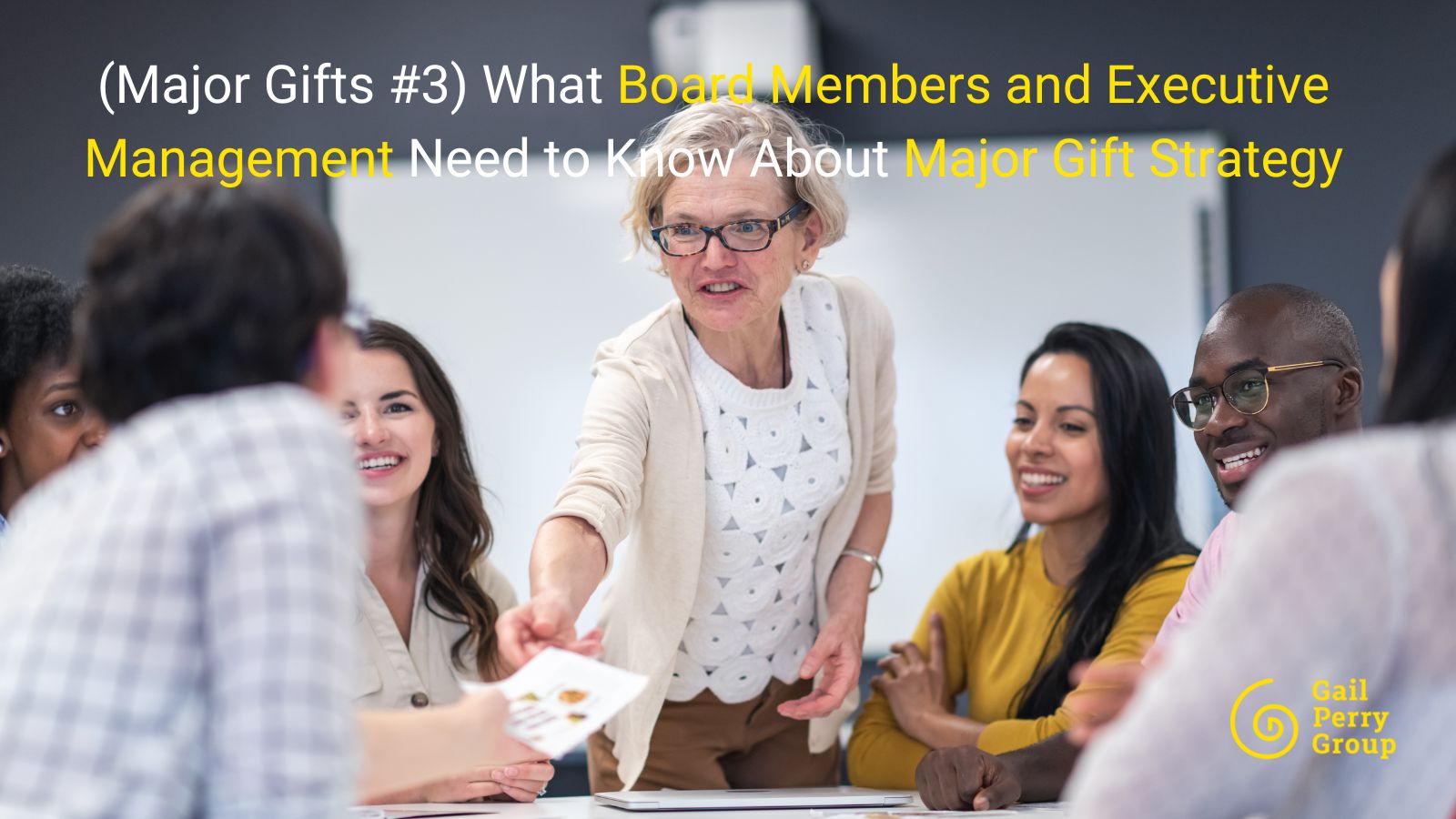(Major Gifts #3) What Board Members and Executive Management Need to Know About Major Gift Strategy
Have you ever mentioned the word “fundraising” to your board members and watched them start running away? How about your CEO and the executive team? How do they feel about fundraising?
Much of the squeamishness of board members and CEOs centers on the area of major gifts – working face-to-face with major donors. It’s something many people shy away from.
But not everyone is nervous. I’m happy to report that many boards and CEOs we’ve worked with over the years are quite curious. They want to learn more about how this most important area of fundraising works. They ask us, how exactly can we be successful with major gifts? What does it take?
So, today, we’d like to share with you our outline of what board members and executive teams really need to know about major gift strategy.
To address this important topic, we’ve added a special presentation for board members in our Major Gifts Intensive program – and this topic is always one of their favorites.
Here’s what board members and CEOs really need to understand:
Fundraising is not about making a “pitch” to a donor.
The first and most important thing to know about securing major gifts is that it is absolutely not about selling.
The largest major gifts are NOT secured by making a Big Ask for money. Success is absolutely not centered on an aggressive asking situation.
It’s so important for everyone to understand that successful major gift fundraising does not require a pitch or selling something to a donor.
On the contrary, to be successful, we have to spend 90% of our time nurturing relationships with our major donors, so they will get to know us and our organizations. And we spend less than 10% of the time with donors having asking conversations.
In our upcoming Major Gifts Intensive, we teach a permission-based strategy – so that the donor is in charge of the relationship and the entire process. In these cases, our donors often literally say to our participant organizations, “How can I help?” and “What do you need?”
In many cases, we’ve seen donors make 6 and even 7-figure gifts to our organizations without having to be asked.
This means that: when you are not so focused on the gift and the ask, you are far more successful.
Success with major donors takes a long-term, consistent effort.
Another major point for board members and CEOs to understand is that success doesn’t happen overnight. You have to build a trusting relationship with the donor. They have to know you and like you – and trust you.
Donors are not going to part with a 6 or 7-figure gift without getting to trust us. And that doesn’t happen overnight.
It takes time to develop these relationships, and you can’t rush it. Mega major gifts come from long-term happy relationships with donors who know you, care about you, and deeply believe in your mission.
This means that: you can’t expect a fundraiser to come in out of the blue and immediately work miracles. They have to have something to work with.
Investing in fundraising makes money for you. It’s a profit center, not a cost center.
It’s so important to understand that fundraising costs are NOT a black hole into which you pour money.
Instead, every dollar you spend in fundraising actually pays for itself – and brings in a multiple-dollar return on your investment.
So fundraising is one of the few parts of the organization that increases cash flow. Investing more in fundraising will yield a proportionately higher cash flow.
In general, investing one dollar in major gift fundraising will probably yield 10 dollars back.
Events are the least efficient way to raise money. Working with major donors who make large gifts is the most efficient.
Many board members like to promote events as fundraising tools. However, you will want to consider how much an event will cost in terms of time, money, and effort, vs. the amount of funding it will bring in.
The payoff is rarely there when you consider the high cost of events.
The return on investment from an event is typically 50%. Half of what you raise is eaten up with costs. Experienced fundraising professionals know that events are not an effective way to raise money.
The return on individual donor fundraising is much higher, only costing five -10 cents on each dollar raised.
Everyone in the organization can help in major gift fundraising, without having to ask.
There are many roles board members and program staffers can play in building happy relationships with major donors.
When fundraising is celebrated as an important and mission-centric activity, such that everyone embraces it – that’s when organizations are most successful and raise the most money.
This means that: When the whole organization embraces and supports fund development, much more revenue flows in to help expand your mission.



